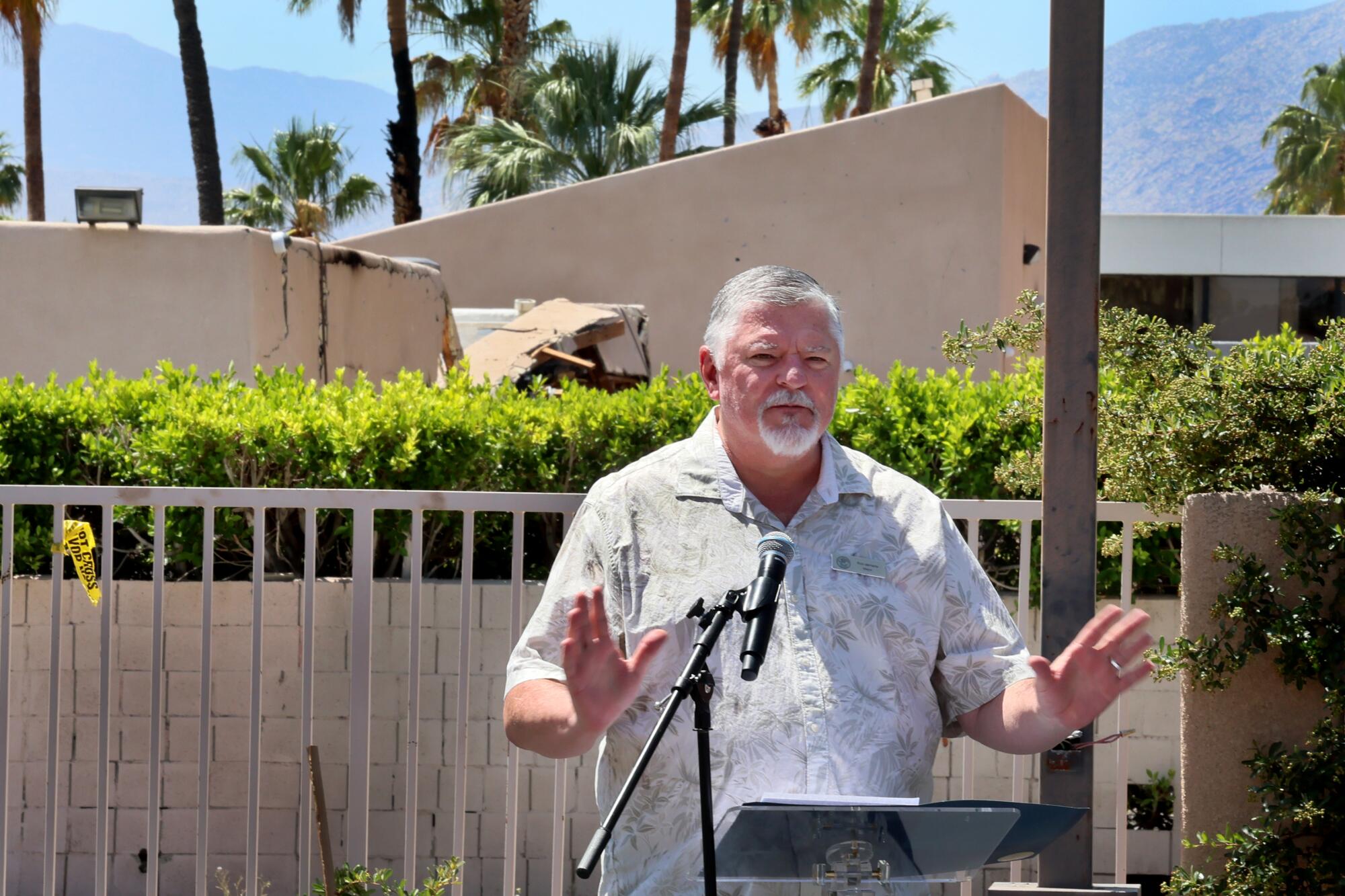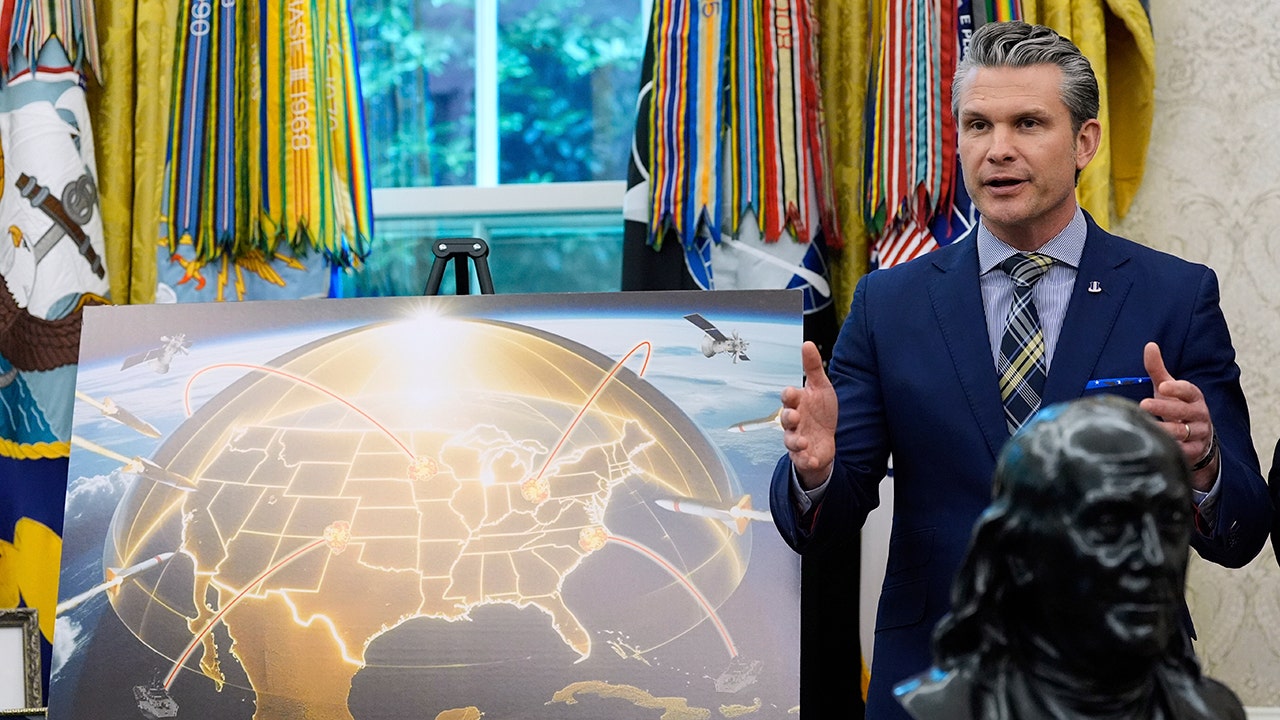Science
Government Science Data May Soon Be Hidden. They’re Racing to Copy It.

Amid the torrent of executive orders signed by President Trump were directives that affect the language on government web pages and the public’s access to government data touching on climate change, the environment, energy and public health.
In the past two months, hundreds of terabytes of digital resources analyzing data have been taken off government websites, and more are feared to be at risk of deletion. While in many cases the underlying data still exists, the tools that make it possible for the public and researchers to use that data have been removed.
But now, hundreds of volunteers are working to collect and download as much government data as possible and to recreate the digital tools that allow the public to access that information.
So far, volunteers working on a project called Public Environmental Data Partners have retrieved more than 100 data sets that were removed from government sites, and they have a growing list of 300 more they hope to preserve.
It echoes efforts that began in 2017, during Mr. Trump’s first term, when volunteers downloaded as much climate, environmental, energy and public health data as possible because they feared its fate under a president who has called climate change a hoax.
Little federal information disappeared then. But this time is different. And so, too, is the response.
“We should not be in this position where the Trump administration can literally take down every government website if it wants to,” said Gretchen Gehrke, an environmental scientist who helped found the Environmental Data and Governance Initiative in 2017 to conserve federal data. “We’re not prepared for having resilient public information in the digital age and we need to be.”
While a lot of data generated by agencies, like climate measurements collected by the National Oceanic and Atmospheric Administration, is required by Congress, the digital tools that allow the public to view that data are not.
“This is a campaign to remove public access,” said Jessie Mahr, the director of technology at the Environmental Policy Innovation Center, a member group of the data partnership. “And at the end of the day, American taxpayers paid for these tools.”
The Public Environmental Data Partners coalition has received frequent requests for two data tools: the Climate and Economic Justice Screening Tool, or CEJST, and the Environmental Justice Screening Tool, or EJScreen.
The first was developed under a Biden administration initiative to make sure that 40 percent of federal climate and infrastructure investments to go to disadvantaged communities. It was taken offline in January. EJScreen, developed under the Obama administration and once available through the E.P.A, was removed in early February.
“The very first thing across the executive branch was to remove references to equity and environmental justice and to remove equity tools from all agencies,” Dr. Gehrke said. “It really impairs the public’s ability to demonstrate structural racism and its disproportionate impacts on communities of color.”
Just a dozen years ago, the E.P.A. defined environmental justice as “the fair treatment and meaningful involvement of all people regardless of race, color, national origin, or income.” The E.P.A.’s new administrator, Lee Zeldin, recently equated environmental justice to “forced discrimination.”
Nonprofit organizations used both screening tools to apply for federal grants related to environmental justice and climate change. But the E.P.A. closed all of its environmental justice offices last week, ending three decades of work to mitigate the effects on poor and minority communities often disproportionately burdened by industrial pollution. It also canceled hundreds of grants already promised to nonprofit groups trying to improve conditions in those communities.
“You can’t possibly solve a problem until you can articulate it, so it was an important source of data for articulating the problem,” said Harriet Festing, executive director of the nonprofit group Anthropocene Alliance.
Christina Gosnell, co-founder and president of Catalyst Cooperative, a member of the environmental data cooperative, said her main concern was not that the data won’t be archived before it disappears, but that it won’t be updated.
Preserving the current data sets is the first step, but they could become irrelevant if data collection stops, she said.
More than 100 tribal nations, cities, and nonprofits used CEJST to show where and why their communities needed trees, which can reduce urban heat, and then applied for funds from the Arbor Day Foundation, a nonprofit organization that received a $75 million grant from the Inflation Reduction Action. The Arbor Day Foundation was on track to plant over a quarter of a million new trees before its grant was terminated in February.
How hard it is to reproduce complex tools depends on how the data was created and maintained. CEJST was “open source,” meaning the raw data and information that backed it up were already publicly accessible for coders and researchers. It was put back together by three people within 24 hours, according to Ms. Mahr.
But EJScreen was not an open source tool, and recreating it was more complicated.
“We put a lot of pressure on the last weeks of the Biden administration to make EJScreen open source, so they released as much code and documentation as they could,” Dr. Gehrke said.
It took at least seven people more than three weeks to make a version of EJScreen that was close to its original functionality, and Ms. Mahr said they’re still tinkering with it. It’s akin to recreating a recipe with an ingredient list but no assembly instructions. Software engineers have to try and remember how the “dish” tasted last time, and then use trial and error to reassemble it from memory.
Now, the coalition is working to conserve even more complicated data sets, like climate data from NOAA, which hosts many petabytes — think a thousand terabytes, or more than a million gigabytes — of weather observations and climate models in its archives.
“People may not understand just how much data that is,” Dr. Gehrke said in an email. It could cost hundreds of thousands of dollars per month just in storage fees, she said, without including the cost of any sort of access. She said they were talking to NOAA personnel to prioritize the most vulnerable and highest impact data to preserve as soon as possible.
So far, the data they’ve collected is largely stored in the cloud and backed up using servers around the globe; they’ve worked out pro bono agreements to avoid having to pay to back it up.
Some data have, so far, been left alone, like statistics from the Energy Information Administration, among other agencies. Zane Selvans, a fellow co-founder of Catalyst Cooperative said the group had worked for the past eight years to aggregate U.S. energy system data and research in the form of open source tools. The goal is to increase access to federal data that is technically available but not necessarily easy to use.
“So far we’ve been lucky,” Mr. Selvans said. “Folks working on environmental justice haven’t been as lucky.”

Science
Trump cuts will cause a spike in HIV cases in L.A. and across the country, warn Democrats and public health advocates

A growing coalition of HIV prevention organizations, health experts and Democrats in Congress are sounding the alarm over sweeping Trump administration cuts to HIV/AIDS prevention and surveillance programs nationally, warning they will reverse years of progress combating the disease and cause spikes in new cases — especially in California and among the LGBTQ+ community.
In a letter addressed Friday to Health and Human Services Secretary Robert F. Kennedy Jr., Rep. Laura Friedman (D-Glendale) and 22 of her House colleagues demanded the release of HIV funding allocated by Congress but withheld by the Trump administration. They cited estimates from the Foundation for AIDS Research, known as amfAR, that the cuts could lead to 143,000 additional HIV infections nationwide and 127,000 additional deaths from AIDS-related causes within five years.
Friedman said the effects would be felt in communities small and large across the country but that California would be hit the hardest. She said L.A. County — which stands to lose nearly $20 million in annual federal HIV prevention funding — is being forced to terminate contracts with 39 providers and could see as many as 650 new cases per year as a result.
According to amfAR, that would mark a huge increase, pushing the total number of new infections per year in the county to roughly 2,000.
“South L.A. and communities across California are already feeling the devastating impacts of these withheld HIV prevention funds. These cuts aren’t just numbers — they’re shuttered clinics, canceled programs, and lives lost,” Friedman said in a statement to The Times.
As one example, she said, the Los Angeles LGBT Center — which is headquartered in her district — would likely have to eliminate a range of services including HIV testing, STD screening, community education and assistance for patients using pre-exposure prophylaxis, or PrEP, a medicine taken by pill or shot that can greatly reduce a person’s risk of becoming infected from sex or injection drug use.
A list reviewed by The Times of L.A. County providers facing funding cuts included large and small organizations and medical institutions in a diverse set of communities, from major hospitals and nonprofits to small clinics. The list was provided by a source on the condition of anonymity in order to be candid about the funding of organizations that have not all publicly announced the cuts.
The affected organizations serve a host of communities that already struggle with relatively high rates of HIV infection, including low-income, Spanish speaking, Black and brown and LGBTQ+ communities.
According to L.A. County, the Trump administration’s budget blueprint eliminates or reduces a number of congressionally authorized public health programs, including funding cuts to the domestic HIV prevention program and the Ryan White program, which supports critical care and treatment services for uninsured and underinsured people living with HIV.
The county said the cuts would have “an immediate and long-lasting impact” on community health.
Dozens of organizations and hospitals, such as Children’s Hospital of Los Angeles, are bracing for the disruption and potential vacuum of preventative services they’ve been providing to the community since the 1980s, according to Claudia Borzutzky, the hospital’s Chief of Adolescent and Young Adult Medicine.
Borzutzky said without the funding, programs that provide screening, education, patient navigation and community outreach — especially for at-risk adolescents and young adults — will evaporate. So, too, will free services that help patients enroll in insurance and access HIV prevention medications.
Patients who “face a variety of health barriers” and are often stigmatized will bear the brunt, she said, losing the “role models [and] peer educators that they can relate to and help [them] build confidence to come into a doctor’s office and seek testing and treatment.”
“We are having to sunset these programs really, really quickly, which impacts our patients and staff in really dramatic ways,” she said.
Answers to queries sent to other southern California health departments suggested they are trying to figure out how to cope with budget shortfalls, too. Health officials from Kern, San Bernardino and Riverside counties all said the situation is uncertain, and that they don’t yet know how they will respond.
Friedman and her colleagues — including fellow California representatives Nancy Pelosi, Judy Chu, Gilbert Cisneros Jr., Robert Garcia, Sam Liccardo, Kevin Mullin, Mark Takano, Derek Tran and George Whitesides — said they were concerned not only about funding for programs nationwide being cut, but also about the wholesale dismantling or defunding of important divisions working on HIV prevention within the federal government.
They questioned in their letter staffing cuts to the National Center for HIV, Viral Hepatitis, STD, and Tuberculosis Prevention at the U.S. Centers for Disease Control and Prevention, as well as “the reported elimination” of the Division of HIV Prevention within that center.
In addition to demanding the release of funds already allocated by Congress, the representatives called on Kennedy — and Dr. Debra Houry, deputy director of the CDC — to better communicate the status of ongoing grant funding, and to release “a list of personnel within CDC who can provide timely responses” when those groups to whom Congress had already allocated funding have questions moving forward.
“Although Congress has appropriated funding for HIV prevention in Fiscal Year 2025, several grant recipients have failed to receive adequate communication from CDC regarding the status of their awards,” Friedman and her colleagues wrote. “This ambiguity has caused health departments across the country to pre-emptively terminate HIV and STD prevention contracts with local organizations due to an anticipated lack of funding.”
The letter is just the latest challenge to the Trump administration’s sweeping cuts to federal agencies and to federal funding allocated by Congress to organizations around the country.
Through a series of executive orders and with the help of his billionaire adviser Elon Musk’s “Department of Government Efficiency” and other agency heads, Trump in the first months of his second term has radically altered the federal government’s footprint, laying off thousands of federal workers and attempting to claw back trillions of dollars in federal spending — to be reallocated to projects more aligned with his political agenda, or used to pay for tax cuts that Democrats and independent reviewers have said will disproportionately help wealthy Americans.
California Atty. Gen. Rob Bonta’s office has repeatedly sued the Trump administration over such moves, including cuts and layoffs within Health and Human Services broadly and cuts to grants intended to make states more resistant to infectious disease specifically — calling them unwise, legally unjustifiable and a threat to the health of average Americans.
LGBTQ+ organizations also have sued the Trump administration over orders to preclude health and other organizations from spending federal funding on diversity, equity and inclusion programs geared toward LGBTQ+ populations, including programs designed to decrease new HIV infections and increase healthy management of the disease among transgender people and other vulnerable groups.
“The orders seek to erase transgender people from public life; dismantle diversity, equity, inclusion, and accessibility initiatives; and strip funding from nonprofits providing life-saving health care, housing, and support services,” said Jose Abrigo, the HIV Project Director of Lambda Legal, in a statement. The legal group has filed a number of lawsuits challenging the Trump administration cuts, including one on behalf of the San Francisco AIDS Foundation and other nonprofits.
Trump has defended his cuts to the federal government as necessary to implement his agenda. He and his agency leaders have consistently said that the cuts target waste, fraud and abuse in the government, and that average Americans will be better served following the reshuffling.
Kennedy has consistently defended the changes within Health and Human Services, as well. Agency spokespeople have said the substantial cuts would help it focus on Kennedy’s priorities of “ending America’s epidemic of chronic illness by focusing on safe, wholesome food, clean water, and the elimination of environmental toxins.”
“We aren’t just reducing bureaucratic sprawl. We are realigning the organization with its core mission and our new priorities in reversing the chronic disease epidemic,” Kennedy has said. “This Department will do more — a lot more — at a lower cost to the taxpayer.”
Kennedy has repeatedly spread misinformation about HIV and AIDS in the past, including by giving credence to the false claim that HIV does not cause AIDS.
As recently as June 2023, Kennedy told a reporter for New York Magazine that there “are much better candidates than H.I.V. for what causes AIDS,” and he has previously suggested that environmental toxins and “poppers” — an inhalant drug popular in the gay community — could be causes of AIDS instead.
None of that is supported by science or medicine. Studies from around the world have proven the link between HIV and AIDS, and found it — not drug use or sexual behavior — to be the only common factor in AIDS cases.
Officials in L.A. County said they remained hopeful that the Trump administration would reverse course after considering the effects of the cuts — and the “detrimental impacts on the health and well-being of residents and workers across” the county if they are allowed to stand.
Science
Fertility clinic director vows to rebuild after Palm Springs bombing. 'Life is preserved'

PALM SPRINGS — Less than a week after a targeted bomb explosion nearly destroyed his fertility clinic, Dr. Maher Abdallah stood below the blazing desert sun in front of a liquor store, its windows blown out by the powerful blast. Behind him was what remained of American Reproductive Centers.
The clinic — the Coachella Valley’s only full-service fertility center and IVF lab, according to its website — had been relegated to a crime scene. All four buildings will need to be demolished and replaced, a process that could take up to two years, he said. Still, he dismissed the destruction as “material loss.”
In what Abdallah described as a series of miracles, nobody was in the clinic last Saturday morning and its in vitro fertilization lab remained intact despite the mighty force of the explosion. The attack knocked out the electricity that powered the facility’s incubators and damaged the backup generator, but emergency responders rushed in to address the outage and ensure that the thousands of frozen eggs, sperm and embryos stored in cryogenic tanks went unharmed.
He later learned that of the 14 embryos that were dividing in incubators at the time of the attack — all belonging to one same-sex couple — eight had become “perfect blastocysts,” or balls of cells that form early in pregnancy.
Saturday’s bomb blast in Palm Springs caused large portions of the American Reproductive Centers facility to collapse.
(Allen J. Schaben / Los Angeles Times)
“My return on the investment is babies,” said Abdallah, whose clinic claims to have helped more than 2,000 couples grow their families, many of them in the region’s LGBTQ+ community. “Life is preserved, and that’s really all I care about.”
The bomb that detonated at the fertility clinic in this resort city last Saturday injured four people and killed the suspected bomber, 25-year-old Guy Edward Bartkus, who lived about an hour away in Twentynine Palms. The FBI has labeled the incident as domestic terrorism.
FBI case investigators, as well as law enforcement sources, characterize Bartkus as having “antinatalist” ideations, a conclusion drawn from social media posts and other online materials authorities have linked to him. In those public posts, he argued that procreation without the consent of the unborn is unethical and unjustifiable in a world struggling with environmental harm, violence and overpopulation. In addition, the posts indicate he was mourning the recent death of a friend.
A website that authorities link to Bartkus laid out the case for “a war against pro-lifers” and said a fertility clinic would be targeted. “Basically, I’m a pro-mortalist,” the author wrote, referring to a fringe philosophical position that it is best for sentient beings to die as soon as possible to prevent future suffering.
At a news conference Thursday, Abdallah told the throng of local officials and reporters gathered that he forgave the suspect and had instructed his staff not to talk about him.
When asked about the bomber’s ideology, Abdallah said simply that he was “for life” and didn’t care to weigh in further. The only reference to the suspect came from Abdallah’s business partner, who said the doctor had requested he reach out to Bartkus’ family and offer to pay for his funeral services.

The remains of the car used in Saturday’s bomb attack sit in a twisted pile outside the American Reproductive Centers in Palm Springs.
(Allen J. Schaben / Los Angeles Times)
Instead, Abdallah said he has turned his focus to the future. Just days after the bombing, the clinic was offering basic ultrasounds at another medical office. Next week, American Reproductive Centers will temporarily relocate to a surgical center across the street.
Abdallah vowed to rebuild the clinic on the same site in uptown Palm Springs, across from the local hospital. The facility was well-secured, he said, with cameras on every corner and facing the chained cryogenic equipment. But in the future, he said, he also wants guards to patrol the premises.
“We will rebuild, we will grow, and we will continue to help families grow also,” said Abdallah’s cousin and business partner, Amer Abdallah. “We believe in miracles. We witness them every single day. And no act of hatred can stop us from bringing those miracles into this world.”

Palm Springs Mayor Ron deHarte said the city is working to bring “every possible resource” to the residents and small businesses affected by the bomb attack at American Reproductive Centers.
(Allen J. Schaben / Los Angeles Times)
Palm Springs Mayor Ron deHarte said the city is working with state, regional and county offices to bring “every possible resource” to the residents and small businesses impacted by the blast, which was reportedly felt more than two miles away and damaged windows and walls in nearby buildings.
He said the City Council would be looking into creating programs to support damaged businesses, including reducing fees for building permits and expediting the processes for obtaining new permits, business licenses and inspections.
“This act,” he said, “will never deter us. Love always triumphs in Palm Springs.”
This article is part of The Times’ equity reporting initiative, funded by the James Irvine Foundation, exploring the challenges facing low-income workers and the efforts being made to address California’s economic divide.
Science
Trump Has Cut Science Funding to Its Lowest Level in Decades

National Science Foundation grant funding through May 21
10-year average
$2 billion
The National Science Foundation, which funds much of the fundamental scientific research at American universities, is awarding new grants at the slowest pace in at least 35 years.
The funding decreases touch virtually every area of science — extending far beyond the diversity programs and other “woke” targets that the Trump administration says it wants to cut.
Grants funded by the National Science Foundation through May 21 ↓ 51%
Math, physics and chemistry
$432m
That means less support for early-stage research that underpins future technological advancements — and American competitiveness — in areas like computer science and engineering; physics and chemistry; climate science and weather forecasting; and materials and manufacturing innovations.
It also means less money for undergraduate and graduate students, postdoctoral researchers and early-career professors — potentially disrupting the nation’s future scientific work force.
Economists have warned that cutting federal funding for scientific research could, in the long run, damage the U.S. economy by an amount equivalent to a major recession.
“These cuts are the height of self-inflicted harm,” said Robert Atkinson, the president of the Information Technology and Innovation Foundation, a nonpartisan science and technology policy research institute. The foundation has argued that China probably already conducts more research and development than the United States.
“If they succeed in these cuts, the result will be slower economic growth, less innovation and new tech startups, and even more diminished competitiveness vis-à-vis China,” he added.
The lag in this year’s funding, more than $1 billion below the 10-year average, is for new research grants, but the Trump administration has gone further. It has also terminated more than 1,600 active grants for existing research projects, together worth roughly $1.5 billion (of which at least 40 percent has already been spent).
And it wants to eliminate nearly $5 billion of the agency’s $9 billion budget for next year, cutting spending on “climate; clean energy; woke social, behavioral and economic sciences,” and diversity, equity and inclusion programs.
Among the in-progress grants that have been terminated, those focused on education in science, technology, engineering and mathematics, or STEM, accounted for the vast majority of the canceled funding. Many of these grants focused on broadening participation in science and engineering among underrepresented student groups.
Canceled funding from in-progress grants
| STEM education | -$656 mil. |
| Math, physics, chem. | -$61 mil. |
| Geosciences | -$53 mil. |
| Computer science | -$47 mil. |
| Social sciences | -$46 mil. |
| Technology | -$38 mil. |
| Engineering | -$36 mil. |
| Biology | -$28 mil. |
But in contrast with the canceled grants, the slowdown in issuing new grants is broader, representing an across-the-board hit to American science.
Decline in new grant funding in 2025
| Math, physics, chem. | -$289 mil. |
| STEM education | -$223 mil. |
| Biology | -$156 mil. |
| Engineering | -$127 mil. |
| Geosciences | -$101 mil. |
| Computer science | -$85 mil. |
| Technology | -$18 mil. |
| Social sciences | -$16 mil. |
The N.S.F. said in a statement that while it will focus on the Trump administration’s priorities — like artificial intelligence, quantum information science, biotechnology and nuclear energy — it remains “committed to awarding grants and funding all areas of science and engineering.”
Yet the data shows the agency’s funding of new grants at its lowest level since at least 1990, around when the N.S.F. expanded into its modern structure. The funding has slowed even further since April 30, when agency employees were told to stop awarding funds entirely, according to an email reviewed by The New York Times.
Cumulative grant funding by the National Science Foundation, 1990-2025
Representative Zoe Lofgren of California, the top Democrat on the House science committee, said the Trump administration was denying funding that had already been approved by Congress.
“What they’re doing is not only illegal, but it’s also very damaging to the science enterprise and, ultimately, to the economy of the United States,” she said.
The N.S.F. has said it is canceling awards that are not in line with its priorities, including those focused on D.E.I., environmental justice, misinformation and disinformation. The cancellations have been cheered by Senator Ted Cruz, Republican of Texas, who in February published a list identifying more than a third of the grants that have been terminated.
“My Commerce Committee investigation exposed how the Biden administration corrupted the N.S.F. grantmaking process with a divisive fixation on identity politics,” Mr. Cruz said in a statement. “This kind of politicization erodes public trust in science. The N.S.F. must spend taxpayer dollars responsibly and prioritize objectivity and scientific rigor.”
House Democrats on the science committee have said the cancellations themselves are “based on hard-right political ideology and not scientific or research expertise,” and have noted flaws in Mr. Cruz’s report, like associating the term “biodiversity” with D.E.I.
N.S.F. officials interviewed for this article said many grants that have already gone through the agency’s rigorous review process and were recommended for funding have been in limbo for months. After the April 30 email freezing new awards, which was first reported by Nature, another email on May 13 allowed for some new funding but kept a freeze in place for higher education institutions.
A spokesman for the N.S.F. said it was still “making awards to higher education institutions.”
Either way, the N.S.F.’s directorate for STEM education has had one of the steepest shortfalls in new grants. Its award funding has declined by around 80 percent this year.
Funding through May 21 for …
STEM education ↓ 80%
Undergrad. education
$135m
Equity for excellence in STEM
$46m
Research on learning
$77m
The N.S.F. says that it directly supported over 350,000 researchers, teachers and students last year alone. It supports over 20,000 graduate students, more than any other federal agency except the National Institutes of Health, which funds medical research and has also awarded far fewer grants this year.
Within its education branch, the N.S.F. has moved to eliminate the division of equity for excellence in STEM, which promotes D.E.I. and supports students who are underrepresented in science and engineering. The closure has been put on hold by a court order.
The N.S.F.’s division of graduate education, which funds graduate student research, typically approves $21 million in grants by this point of the year, but has awarded none so far. It announced 1,000 graduate research fellowships this year, down from over 2,000 in prior years, as reported last month by Nature.
Ms. Lofgren said these education programs are required by law and were adopted with bipartisan support.
“You can’t have science without scientists,” she said.
Here’s how the shortfall in grant awards this year has affected other areas of science:
Math, physics and chemistry ↓ 67%
N.S.F. grant funding for core scientific disciplines like math, physics, chemistry and material sciences has dropped by two-thirds this year.
The N.S.F. funds “basic” research in these areas: fundamental or unexpected discoveries that may be decades away from practical applications. That includes research on ultrafast lasers in the 1990s that eventually resulted in bladeless LASIK eye surgery, or radar technology in the 1960s that revolutionized weather prediction three decades later.
Curiosity-driven research lays the foundation for private sector investments and leads to breakthroughs that can be commercialized, said Deborah Wince-Smith, the president of the Council on Competitiveness, a nonpartisan organization composed of chief executives, university presidents and heads of national laboratories.
The N.S.F. has also funded major astronomical observatories that have made groundbreaking discoveries such as capturing the first images of black holes or detecting gravitational waves.
In 2023, the N.S.F. funded half of all federally supported basic research in math and statistics in American colleges. So far this year, math and statistics grant funding is lagging behind previous years by 72 percent.
Funding for physics grants this year has fallen by 85 percent, and funding for materials research grants has dropped by 63 percent.
Engineering ↓ 57%
N.S.F. grant funding for core engineering disciplines has dropped by 57 percent this year. These divisions fund areas like robotics, manufacturing innovations and semiconductor research.
Funding for grants related to chemical, bioengineering, environmental and transport systems has fallen by 71 percent this year, while funding for grants related to civil and mechanical engineering and manufacturing innovation has fallen by 48 percent.
Biology ↓ 52%
Biological infrastructure
$99m
Most federal funding for biology research comes from the National Institutes of Health, but the N.S.F. also supports the field. Its grant funding for biology is at half of its previous 10-year average. There were fewer funds awarded for research in biotechnology and environmental biology, and less money for the tools, facilities and people that support biological research.
Computer science ↓ 31%
Information & intelligent systems
$68m
Advanced cyberinfrastructure
$39m
Computing foundations
$74m
Computer science divisions that have supported research in topics like artificial intelligence, data science, computer security and emerging computing technologies have awarded fewer funds this year.
But the office of advanced cyberinfrastructure has awarded twice the funding that is typical by this time of year, including a $26 million grant for generative A.I. tools and a $20 million grant to “advance American leadership in artificial intelligence.”
In 2023, the N.S.F. provided 72 percent of federal funds for foundational computer science research at colleges and universities.
The agency provided early funding that led to recent developments in artificial intelligence. For example, the researchers who received the 2024 Nobel Prize in Physics for their work in artificial neural networks — technologies that underlie tools like ChatGPT — received N.S.F. funding in the 1980s, long before their work had widespread applications.
The funds also support the careers of graduate students, a large share of whom eventually work in the technology industry, said Greg Hager, the former head of the N.S.F.’s Computer and Information Science and Engineering Directorate, who resigned from the agency this month.
“It’s going to impact progress today, but it’s going to have profound impacts for years to come,” he said of the reductions in funding for computer science.
Geosciences ↓ 33%
In 2023, the N.S.F. supported over half of all federally funded basic geosciences research in American universities.
This year, the agency has fired workers at the Office of Polar Programs, which coordinates research in the Arctic and the Antarctic. The polar office has awarded 88 percent less money in grants this year.
But the ocean sciences division has awarded more funding than typical this year, including a $39 million grant to establish an office that will manage a deep-sea drilling program and an $18 million grant to Columbia University to support a research vessel.
Social and behavioral sciences ↓ 20%
Social science & economics
$31m
Behavioral & cognitive sciences
$32m
There has been a 96 percent decrease in grant funding for multidisciplinary research, which spans biology, physics and engineering. Previously funded projects have included using cells as sensors to monitor pollutants and diseases in wastewater, creating biodegradable robots, and engineering fungi to recover valuable metals from e-waste.
The behavioral and cognitive sciences division has awarded 30 percent more grant funding this year compared with the past decade’s average — despite the Trump administration’s targeting of “woke social, behavioral and economic sciences.” That included funding research on tracking changes in romantic relationships, how hand gestures can enhance learning and a database that lists the average rents in a neighborhood.
Technology, innovation and partnerships ↓ 17%
Translational impacts
$86m
The CHIPS and Science Act, a bipartisan law enacted during the Biden administration in 2022, created the N.S.F.’s Directorate of Technology, Innovation and Partnerships. Last year it funded projects for agricultural technology in North Dakota, climate resilience in Wyoming and semiconductor assembly in Central Florida.
This branch’s grant funding has decreased by 17 percent, a moderate reduction compared with the decreases in other areas.
Here are all the changes so far:
Changes in N.S.F. grant funding
| Directorate | 2015-2024 avg. funding | 2025 funding | Change |
|---|---|---|---|
| Education | $280 mil. | $56 mil. | -80% |
| Graduate education | $21 mil. | $0 | -100% |
| Equity for excellence in STEM | $46 mil. | $1 mil. | -97% |
| Research on learning in formal and informal settings | $77 mil. | $16 mil. | -79% |
| Undergraduate education | $135 mil. | $39 mil. | -71% |
| Math, physics and chemistry | $432 mil. | $143 mil. | -67% |
| Strategic initiatives | $6k | $0 | -100% |
| Physics | $72 mil. | $11 mil. | -85% |
| Mathematical sciences | $113 mil. | $32 mil. | -72% |
| Materials research | $118 mil. | $43 mil. | -63% |
| Chemistry | $103 mil. | $44 mil. | -57% |
| Astronomical sciences | $26 mil. | $12 mil. | -53% |
| Engineering | $221 mil. | $94 mil. | -57% |
| Emerging frontiers in research and innovation | $2 mil. | $42k | -98% |
| Chemical, bioengineering, environmental and transport systems | $75 mil. | $22 mil. | -71% |
| Engineering education and centers | $27 mil. | $12 mil. | -56% |
| Civil, mechanical, and manufacturing innovation | $80 mil. | $42 mil. | -48% |
| Electrical, communications and cyber systems | $36 mil. | $19 mil. | -48% |
| Biology | $303 mil. | $147 mil. | -52% |
| Biological infrastructure | $99 mil. | $32 mil. | -68% |
| Integrative organismal systems | $88 mil. | $34 mil. | -61% |
| Environmental biology | $75 mil. | $39 mil. | -49% |
| Molecular and cellular biosciences | $40 mil. | $37 mil. | -9% |
| Emerging frontiers | $801k | $5 mil. | +521% |
| Geosciences | $305 mil. | $204 mil. | -33% |
| Office of polar programs | $51 mil. | $6 mil. | -88% |
| Earth sciences | $78 mil. | $16 mil. | -80% |
| Research, innovation, synergies and education (RISE) | $11 mil. | $6 mil. | -47% |
| Atmospheric and geospace sciences | $63 mil. | $40 mil. | -36% |
| Ocean sciences | $103 mil. | $136 mil. | +33% |
| Computer science | $277 mil. | $192 mil. | -31% |
| Information & intelligent systems | $68 mil. | $27 mil. | -60% |
| Computer and network systems | $96 mil. | $42 mil. | -57% |
| Computing and communication foundations | $74 mil. | $43 mil. | -41% |
| Office of advanced cyberinfrastructure | $39 mil. | $80 mil. | +102% |
| Social sciences | $78 mil. | $62 mil. | -20% |
| National Center for Science and Engineering Statistics | $2 mil. | $0 | -100% |
| Multidisciplinary activities | $11 mil. | $401k | -96% |
| Social and economic sciences | $31 mil. | $20 mil. | -37% |
| Behavioral and cognitive sciences | $32 mil. | $42 mil. | +30% |
| Technology | $110 mil. | $92 mil. | -17% |
| Technology frontiers | $9k | $0 | -100% |
| Translational impacts | $86 mil. | $44 mil. | -48% |
| Innovation and technology ecosystems | $24 mil. | $47 mil. | +95% |
| Other | $65 mil. | $47 mil. | -29% |
| Total | $2.1 bil. | $1 bil. | -50% |
‘Total confusion’
The National Science Foundation has usually awarded half of its funds for the fiscal year by early July. In theory, this year’s funding levels could still catch up to former levels if the agency accelerates its pace of making awards over the summer.
But officials described an agency that has been thrown into chaos as it tries to navigate a new political landscape under President Trump. The agency is in the midst of a major restructuring to eliminate its 37 divisions. It has also conducted layoffs and placed pressure on its workers to resign or retire. (The restructuring and termination of employees has been paused by a court order until Friday.)
Many N.S.F. divisions do not know how much they can spend this fiscal year, which ends Sept. 30, and this uncertainty may also be contributing to this year’s funding lag.
“There’s total confusion,” said one employee who has worked at the N.S.F. for more than a decade and is involved in determining which grants are recommended for funding. The employee, who did not want to be named out of fear of retaliation for speaking to the news media, said that the N.S.F.’s rigorous review process had been disassembled, and that political mandates had taken precedence over scientific merits when assessing grant proposals.
“There’s confusion on how much money we can spend,” the employee said. “And then there’s confusion because the processes are basically paralyzed.”
About the data
Using the N.S.F.’s awards database, we tabulated the intended award amounts for all projects funded between Jan. 1 and May 21 of each year. The award date is determined by the initial amendment date, which typically precedes the start date of the project. Intended awards reflect the amount that the N.S.F. intends to fund over the entire life of a project, which may extend multiple years beyond the year the project was awarded. All award amounts are inflation-adjusted to March 2025 dollars by using the Personal Consumption Expenditures price index.
-

 Education1 week ago
Education1 week agoVideo: Opinion | We Study Fascism, and We’re Leaving the U.S.
-

 Technology1 week ago
Technology1 week agoLove, Death, and Robots keeps a good thing going in volume 4
-

 News1 week ago
News1 week agoAs Harvard Battles Trump, Its President Will Take a 25% Pay Cut
-

 Politics1 week ago
Politics1 week agoRepublicans say they're 'out of the loop' on Trump's $400M Qatari plane deal
-

 Culture1 week ago
Culture1 week agoBook Review: ‘Hunger Like a Thirst,’ by Besha Rodell
-

 World1 week ago
World1 week agoCommissioner Hansen presents plan to cut farming bureaucracy in EU
-

 Technology1 week ago
Technology1 week agoMeta asks judge to throw out antitrust case mid-trial
-

 Politics1 week ago
Politics1 week agoDem senator says 'no doubt' Biden declined cognitively during presidency

















